Fintech Market Size
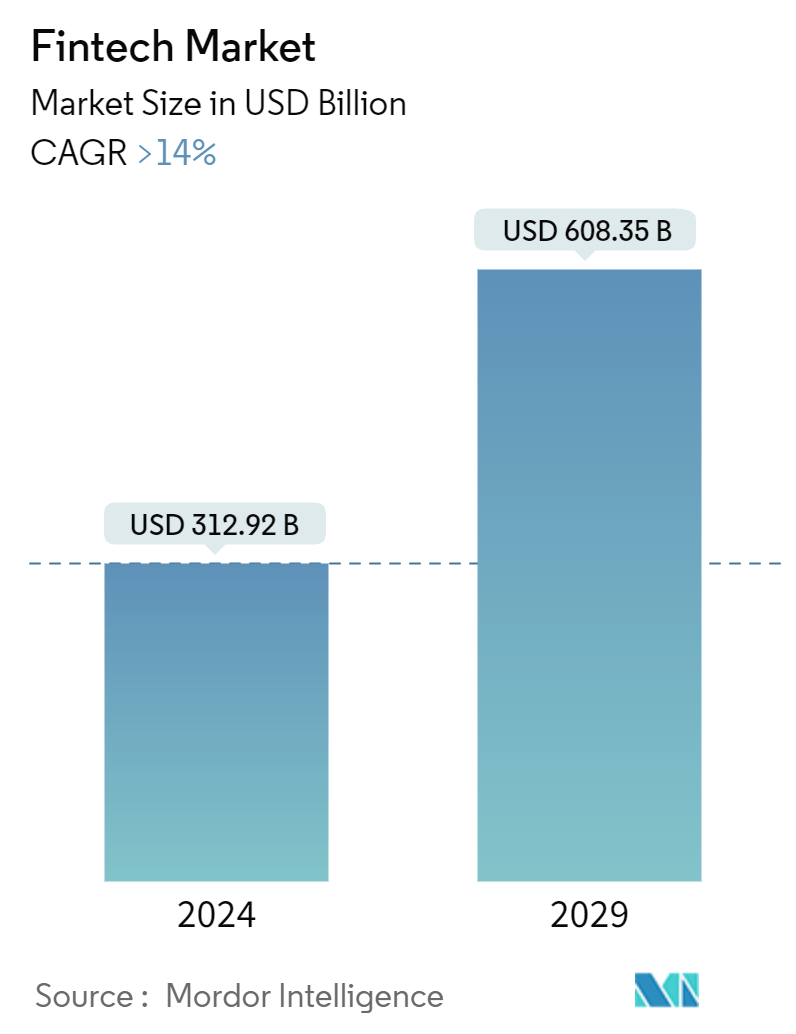
| Study Period | 2020 - 2029 |
| Market Size (2024) | USD 312.92 Billion |
| Market Size (2029) | USD 608.35 Billion |
| CAGR (2024 - 2029) | 14.00 % |
| Fastest Growing Market | Asia Pacific |
| Largest Market | North America |
Major Players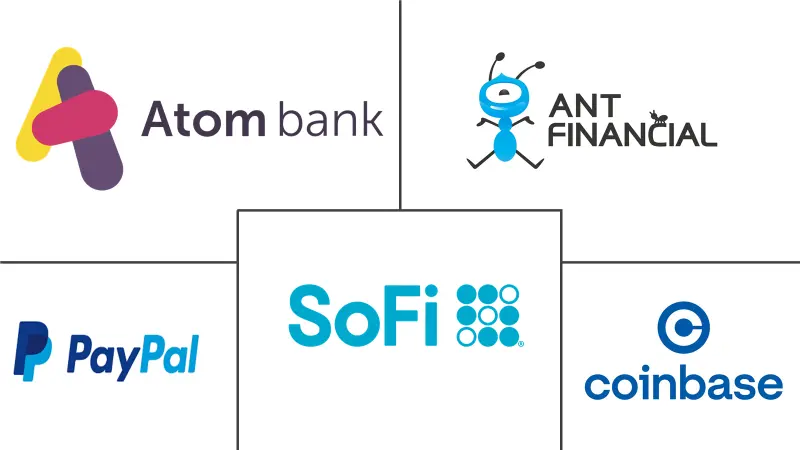
*Disclaimer: Major Players sorted in no particular order |
Fintech Industry Analysis
The Fintech Market size is estimated at USD 312.92 billion in 2024, and is expected to reach USD 608.35 billion by 2029, at a CAGR of greater than 14% during the forecast period (2024-2029).
In the financial industry, fintech stands for financial technology. In businesses that offer automated and enhanced financial services, fintech refers to computer programs and other contemporary technologies. The fintech industry overview shows that the sector has developed significantly over time, which has caused businesses to become more customer focused. It is, therefore, difficult to find a position among the many businesses that exist worldwide, which range from startups to tech enterprises to well-established businesses. As the fintech market size grows, fintech and financial service organizations have pursued disruptive and new ideas in an ever-changing business landscape, taking up each other's lanes with either a collaborative or a competing attitude.
Multiple crises have served as a driving force behind the growth of the fintech industry. Fintech investments have been rising since the last global financial crisis. The traditional financial services sector was severely pressed both during and after the crisis, and its weaknesses led to a technological reaction that resulted in the sector's expansion. According to the fintech market research report the COVID-19 pandemic also had a disastrous effect on the global economy, which started the recession. The fintech industry developed more quickly because of this crisis. Large financial institutions collaborated with up-and-coming tech firms in response to the pandemic to gain access to the new market. The fintech business is growing even though companies themselves are looking to collaborate with big banks to broaden their clientele and offerings.
In recent years, numerous fintech subtypes, such as Insurtech, RecTech, payment services, and others, have been employing cutting-edge technologies customized for certain industries or roles. The degree of execution attained in an organization's plan is becoming more significant now that the fintech sector is more than just a fad. The financial technology industry is experiencing rapid growth on its technological side. There has been an increased adoption of technology that allows for better accuracy, efficiency, and agility, such as blockchain, process automation, application programming interface (API), robotics, and data analytics in the financial technology industry.
Fintech Industry Trends
Surging Adoption of Digital Payments is Driving the Fintech Industry
Money transfers and payments play a fundamental role in the fintech industry, serving as a cornerstone for financial services innovation and digital transformation. As a key part of fintech industry trends, money transfers and payments facilitate access to financial services for underserved populations, including the unbanked and underbanked. Fintech innovations in money transfers and payments improve the overall customer experience by offering convenient, efficient, and user-friendly payment solutions.
Digital payments have revolutionized the fintech industry by providing faster, more efficient, and more secure ways to transfer money and make financial transactions. The use of digital payments has grown in recent years due to the increasing adoption of smartphones, the Internet, and other digital technologies. Digital payments serve as the foundation upon which many fintech innovations are built. Fintech companies leverage digital payment infrastructure to offer different services, including peer-to-peer (P2P) transfers, online lending, robo-advisory, insurance, and more. These solutions enhance financial accessibility and inclusion by leveraging digital payment channels, further expanding the fintech market size. With digital payments, customers can make transactions irrespective of the time and place without the need for physical currency or cards. This convenience has led to a significant increase in the use of digital payments by global fintech companies.
Fintech-driven digital payments often have lower transaction fees when compared to traditional banking methods, especially for cross-border transactions. This cost efficiency benefits both consumers and businesses, reducing the financial barriers associated with conducting transactions and driving the adoption of fintech payment solutions. Fintech companies prioritize security in digital payments by implementing robust encryption, biometric authentication, and fraud detection mechanisms. These measures enhance the security of financial transactions, instilling trust in users and encouraging wider adoption of digital payment solutions in the global fintech market.
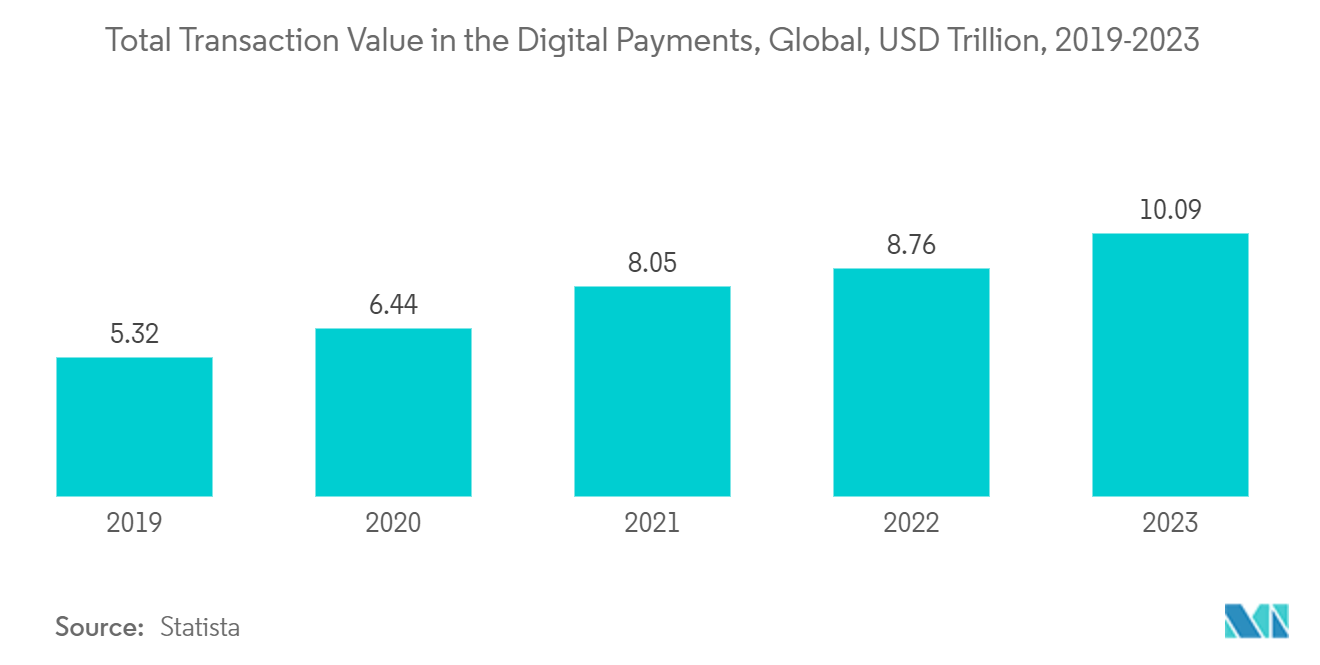
Asia-Pacific Leading the Fintech Industry Owing to Growing Digitalization Coupled with Supportive Regulatory Frameworks
Asia-Pacific is experiencing robust growth and rising demand in the fintech market, driven by several key factors. Firstly, the region's rapidly expanding digital economy, fueled by increasing Internet and smartphone penetration, is creating fertile ground for fintech innovation and adoption. With a large population of digitally savvy consumers, there is a growing demand for convenient and accessible financial services delivered through digital channels.
Additionally, government initiatives aimed at promoting digitalization and financial inclusion, coupled with supportive regulatory frameworks, are fostering a conducive environment for fintech growth in the region. Countries like China, India, Singapore, and Australia are emerging as fintech hubs, attracting significant investment and talent, and are central to current fintech industry trends Several government initiatives and regulatory frameworks have supported the growth of fintech in Asia-Pacific. For instance, the RBI has introduced several measures to promote fintech growth in India, such as the Unified Payments Interface (UPI), which enables seamless real-time payments between different banks and promotes digital transactions. Similarly, fintech companies can test new goods and services in a safe setting by utilizing the regulatory sandbox program established by the Monetary Authority of Singapore (MAS). The Payment Services Act, which offers a regulatory framework for a range of payment activities such as digital wallets, payment processing, and cryptocurrency services, has also been adopted by MAS.
Asia-Pacific is well-positioned to continue serving as a center for fintech innovation and investment, propelling the fintech industry's long-term growth and transformation as fintech disrupts traditional financial services and changes the industry landscape.
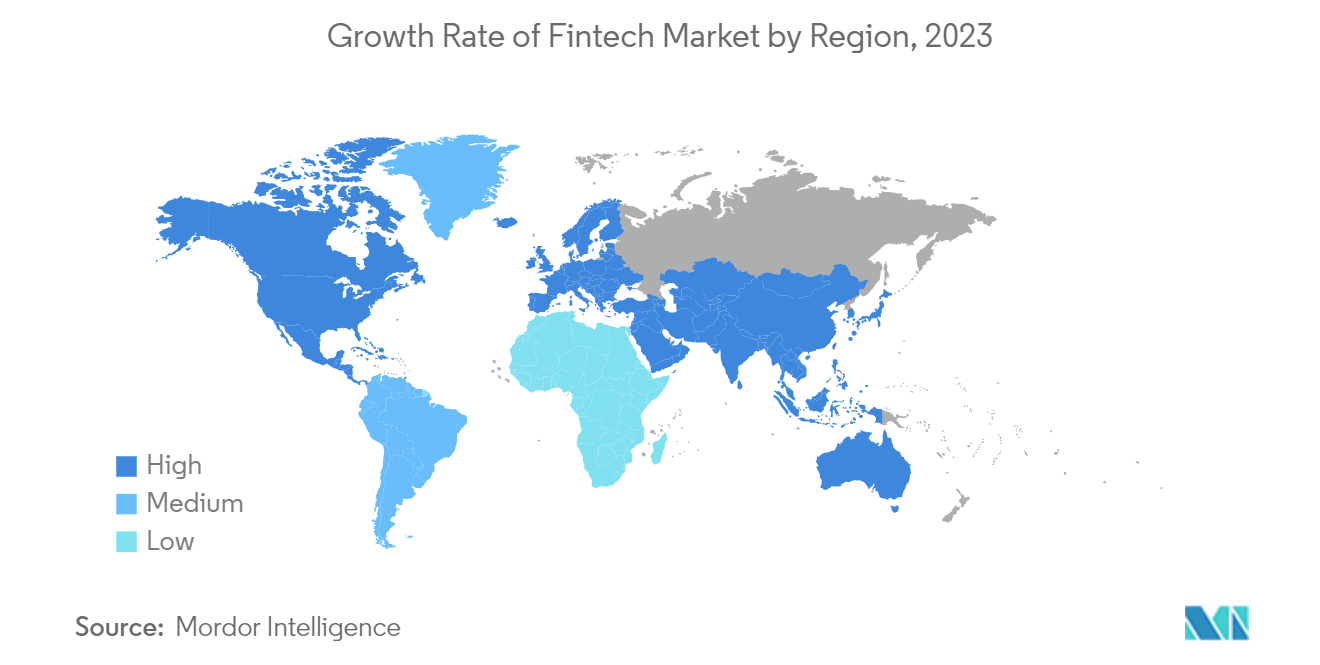
Fintech Industry Overview
The global fintech market is dynamic and evolving, driven by ongoing technological innovation, changing consumer preferences, regulatory developments, and strategic partnerships among various industry players. Global fintech companies in the market include Ant Financials, Atom Bank, SoFi, Paypal, and Coinbase.
Fintech Market Leaders
-
Ant Financial
-
Adeyn
-
Coinbase
-
Robinhood
-
PayPal
*Disclaimer: Major Players sorted in no particular order
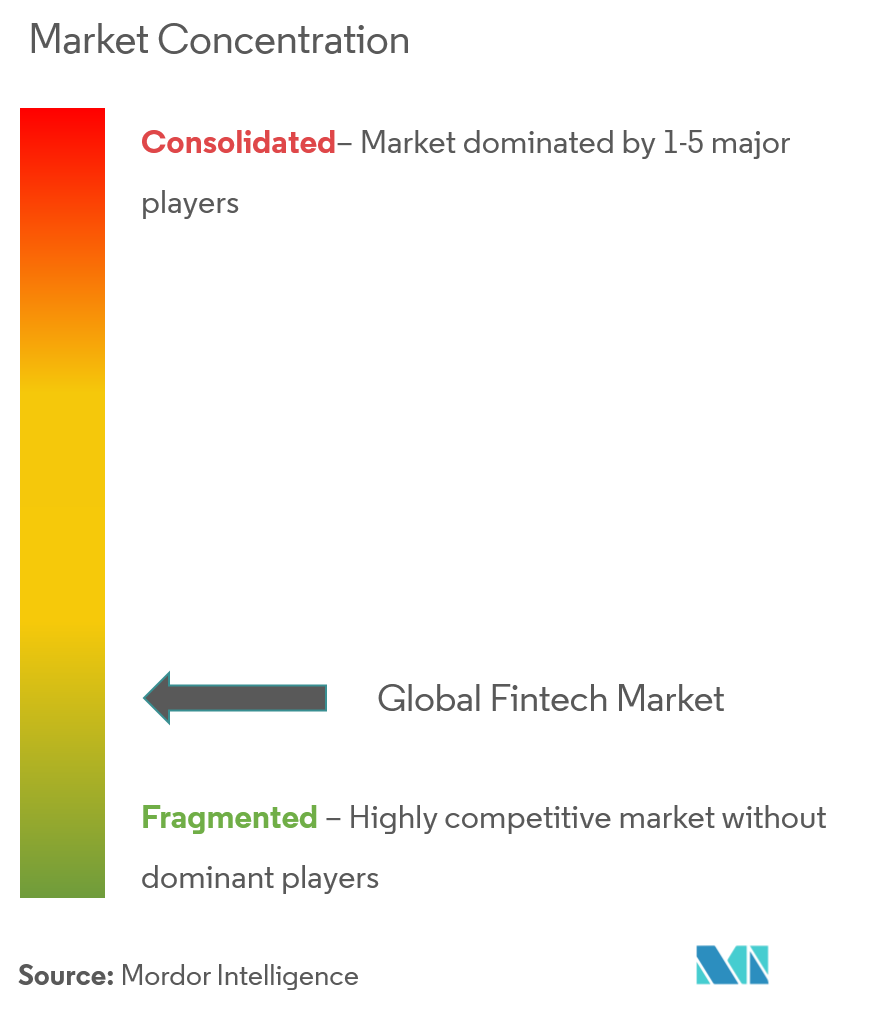
Fintech Market News
- March 2023: MANGOPAY and PayPal expanded their long-term strategic collaboration to give marketplaces instant access to PayPal's international payment capabilities.
- May 2022: Mastercard announced cooperation with Synctera, a renowned FinTech banking service. The firms collaborated to supply account validation solutions for Synctera-powered FinTechs using Mastercard's open banking platform.
- March 2022: Envestnet partnered up with Productfy, a developer of a business-to-business fintech platform. With this collaboration, fintech creators using Productfy's platform would have direct access to Envestnet via a single interface.
Fintech Market Report - Table of Contents
1. INTRODUCTION
- 1.1 Study Assumptions and Market Definition
- 1.2 Scope of the Study
2. RESEARCH METHODOLOGY
3. EXECUTIVE SUMMARY
4. MARKET INSIGHTS AND DYNAMICS
- 4.1 Market Overview
-
4.2 Market Drivers
- 4.2.1 Rise of Digital Payments
- 4.2.2 Rising Investments in FinTech Firms
-
4.3 Market Restraints
- 4.3.1 Intense Competition
- 4.3.2 Increasing Cybersecurity Risks
-
4.4 Market Opportunites
- 4.4.1 Evolving Blockchain Technology and Cryptocurrency
- 4.4.2 Collaboration with Traditional Financial Institutions
- 4.5 Value Chain Analysis
-
4.6 Industry Attractiveness - Porter's Five Forces Analysis
- 4.6.1 Threat of New Entrants
- 4.6.2 Bargaining Power of Buyers/Consumers
- 4.6.3 Bargaining Power of Suppliers
- 4.6.4 Threat of Substitute Products
- 4.6.5 Intensity of Competitive Rivalry
- 4.7 Insights into Technological Innovations in the Market
- 4.8 Impact of COVID-19 on the Market
5. MARKET SEGMENTATION
-
5.1 By Service Proposition
- 5.1.1 Money Transfer and Payments
- 5.1.2 Savings and Investments
- 5.1.3 Digital Lending and Lending Marketplaces
- 5.1.4 Online Insurance and Insurance Marketplaces
- 5.1.5 Other Service Propositions
-
5.2 By Geography
- 5.2.1 North America
- 5.2.1.1 United States
- 5.2.1.2 Canada
- 5.2.1.3 Rest of North America
- 5.2.2 Europe
- 5.2.2.1 United Kingdom
- 5.2.2.2 Germany
- 5.2.2.3 France
- 5.2.2.4 Spain
- 5.2.2.5 Rest of Europe
- 5.2.3 Latin America
- 5.2.3.1 Brazil
- 5.2.3.2 Argentina
- 5.2.3.3 Mexico
- 5.2.3.4 Rest of Latin America
- 5.2.4 Asia-Pacific
- 5.2.4.1 China
- 5.2.4.2 India
- 5.2.4.3 Japan
- 5.2.4.4 South Korea
- 5.2.4.5 Rest of Asia-Pacific
- 5.2.5 Middle East and Africa
- 5.2.5.1 United Arab Emirates
- 5.2.5.2 Saudi Arabia
- 5.2.5.3 Rest of Middle East and Africa
6. COMPETITIVE LANDSCAPE
- 6.1 Market Concentration Overview
-
6.2 Company Profiles
- 6.2.1 Ant Financials
- 6.2.2 Zhong An International
- 6.2.3 Atom Bank
- 6.2.4 Paypal
- 6.2.5 SoFi
- 6.2.6 CoinBase
- 6.2.7 Robinhood
- 6.2.8 Adyen
- 6.2.9 N 26
- 6.2.10 Ally Financials
- 6.2.11 Oscar Health
- 6.2.12 Klarna
- 6.2.13 Avant*
- *List Not Exhaustive
7. MARKET FUTURE TRENDS
8. DISCLAIMER AND ABOUT US
** Subject To AvailablityFintech Industry Segmentation
The term fintech (financial technology) is used to refer to computer programs and other modern technologies used by different businesses that offer automated and improved financial services.
The global fintech market can be segmented based on service proposition and geography. By service proposition, the financial technology industry is segmented into money transfer and payments, savings and investments, digital lending and lending marketplaces, online insurance and insurance marketplaces, and other service propositions. By geography, the market is segmented into Europe, Asia-Pacific, North America, Latin America, and the Middle East and Africa. The fintech market research report offers fintech market size and forecasts in value terms (USD) for all the above-mentioned segments.
| By Service Proposition | Money Transfer and Payments | |
| Savings and Investments | ||
| Digital Lending and Lending Marketplaces | ||
| Online Insurance and Insurance Marketplaces | ||
| Other Service Propositions | ||
| By Geography | North America | United States |
| Canada | ||
| Rest of North America | ||
| By Geography | Europe | United Kingdom |
| Germany | ||
| France | ||
| Spain | ||
| Rest of Europe | ||
| By Geography | Latin America | Brazil |
| Argentina | ||
| Mexico | ||
| Rest of Latin America | ||
| By Geography | Asia-Pacific | China |
| India | ||
| Japan | ||
| South Korea | ||
| Rest of Asia-Pacific | ||
| By Geography | Middle East and Africa | United Arab Emirates |
| Saudi Arabia | ||
| Rest of Middle East and Africa |
Fintech Market Research FAQs
How big is the Global Fintech Market?
The Global Fintech Market size is expected to reach USD 312.92 billion in 2024 and grow at a CAGR of greater than 14% to reach USD 608.35 billion by 2029.
What is the current Global Fintech Market size?
In 2024, the Global Fintech Market size is expected to reach USD 312.92 billion.
Who are the key players in Global Fintech Market?
Ant Financial, Adeyn, Coinbase, Robinhood and PayPal are the major companies operating in the Global Fintech Market.
Which is the fastest growing region in Global Fintech Market?
Asia Pacific is estimated to grow at the highest CAGR over the forecast period (2024-2029).
Which region has the biggest share in Global Fintech Market?
In 2024, the North America accounts for the largest market share in Global Fintech Market.
What years does this Global Fintech Market cover, and what was the market size in 2023?
In 2023, the Global Fintech Market size was estimated at USD 269.11 billion. The report covers the Global Fintech Market historical market size for years: 2020, 2021, 2022 and 2023. The report also forecasts the Global Fintech Market size for years: 2024, 2025, 2026, 2027, 2028 and 2029.
What are the key technology innovations shaping the Fintech Market?
The key technology innovations shaping the Fintech Market are a) Application Programming Interface (API) b) Robotic Process Automation (RPA) c) Blockchain and Data Analytics
What are the key technology innovations shaping the Fintech Market?
The key technology innovations shaping the Fintech Market are a) Application Programming Interface (API) b) Robotic Process Automation (RPA) c) Blockchain and Data Analytics
Fintech Industry Report
The fintech market is projected to grow significantly in the coming years, driven by the adoption of advanced technology in financial institutions. Fintech companies provide a range of services, including payment processing, P2P lending platforms, fraud detection, and blockchain technology. The integration of AI and machine learning in fintech enhances fraud detection, customer service, and personalization of financial services. The adoption of cloud computing in fintech optimizes operations and fuels market growth. However, data privacy and security concerns may hamper market growth. The market is segmented by technology, with blockchain holding the largest share due to its high security and transparency. The market is also segmented by application, with fraud monitoring capturing the largest share due to the real-time monitoring of financial transactions. Statistics for the fintech market share, size and revenue growth rate, created by Mordor Intelligence™ Industry Reports. Fintech analysis includes a market forecast outlook and historical overview. Get a sample of this industry analysis as a free report PDF download.



